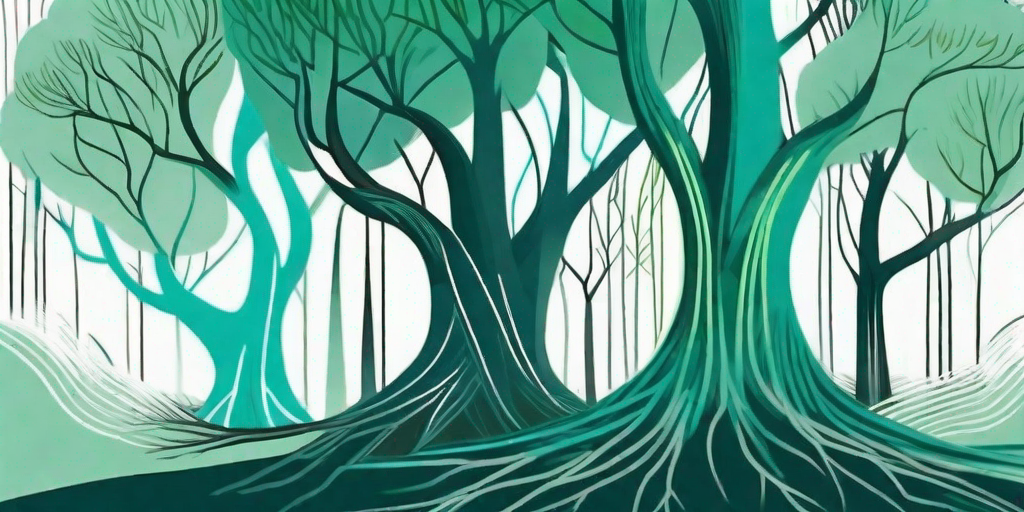
Trees, those tall, leafy green giants that grace our landscapes, are more than just static fixtures in the environment. They lead a secret life, full of movement and vitality, that often goes unnoticed by the casual observer. But why should we care about the locomotion of trees, you ask? Well, buckle up, dear reader, because we're about to embark on a wild journey into the world of arboreal acrobatics.
Tree Movement: The How and Why
First things first, let's clear up a common misconception. When we talk about tree movement, we're not suggesting that trees are pulling up their roots and going for a leisurely stroll in the park. If that were the case, we'd have a lot more to worry about than just deforestation. No, the movement of trees is a lot more subtle, yet equally fascinating.
So, how do trees move? Well, they do so in response to various environmental stimuli, such as light, gravity, and water. This type of movement is known as tropism. Phototropism is when a tree grows towards the light, geotropism is when it grows in response to gravity, and hydrotropism is when it grows towards water. It's like the tree version of 'Simon Says'.
Phototropism: The Sun Chasers
Let's start with phototropism. Trees are the ultimate sun chasers. They grow towards the light to maximize their photosynthesis potential. It's like they're constantly trying to get the perfect tan. And who can blame them? Sunlight is essential for their survival.
But how do they know where the light is coming from? Well, it's all thanks to a hormone called auxin. When light hits one side of a tree, auxin is distributed to the other side, causing that side to grow faster and the tree to bend towards the light. It's a clever little trick that ensures they get their daily dose of Vitamin D.
Geotropism: The Gravity Defiers
Next up, we have geotropism. Trees are the ultimate gravity defiers. Their roots grow downwards, anchoring them to the ground, while their branches and leaves grow upwards, reaching for the sky. It's like they're doing a permanent handstand.
Again, this is all thanks to auxin. When a tree is tilted, auxin accumulates on the lower side, causing the cells there to elongate and the tree to straighten up. It's like they have their own built-in spirit level.
Hydrotropism: The Water Seekers
Finally, we have hydrotropism. Trees are the ultimate water seekers. Their roots grow towards water sources, ensuring they stay hydrated. It's like they have their own built-in divining rod.
This is particularly important in arid environments, where water is scarce. Trees can extend their roots deep into the ground in search of water, sometimes reaching depths of over 60 meters. That's the equivalent of a 20-story building! Talk about going the extra mile for a drink.
Why Tree Movement Matters
Now that we know how trees move, let's delve into why it matters. Tree movement is crucial for their survival, but it also has significant implications for the environment and us humans.
Firstly, tree movement helps to maintain the health of the forest ecosystem. By growing towards light, water, and nutrients, trees ensure their own survival, but they also create habitats for other plants and animals. It's like they're the landlords of the forest.
Secondly, tree movement plays a crucial role in soil stability. The roots of trees bind the soil together, preventing erosion and landslides. So, next time you're hiking up a hill, remember to thank the trees for not letting you slide back down.
Finally, tree movement is important for our understanding of plant biology. By studying how trees respond to environmental stimuli, we can learn more about their physiology and behavior, which can help us to develop more sustainable forestry practices. So, in a way, trees are teaching us how to take better care of them. How thoughtful of them!
FAQs
Do all trees move?
Yes, all trees move in response to environmental stimuli. However, the extent and direction of their movement can vary depending on the species and the specific conditions.
How fast do trees move?
Tree movement is a slow process that happens over a period of days, weeks, or even months. It's not something you can observe in real time, unless you have the patience of a saint.
Can trees move in response to other stimuli?
Yes, trees can also move in response to touch (thigmotropism) and chemicals (chemotropism). However, these types of movement are less common and less well understood than phototropism, geotropism, and hydrotropism.
Conclusion
So, there you have it, the secret life of trees revealed. They may not be able to walk or talk, but they sure know how to move. And their movement is not just a quirky feature, but a vital part of their survival and our ecosystem.
So, next time you're out and about, take a moment to appreciate the trees around you. They're not just standing there looking pretty, they're busy chasing the sun, defying gravity, and seeking water. And who knows, they might even be teaching us a thing or two about resilience and adaptation. Now, isn't that something to leaf you in awe?















